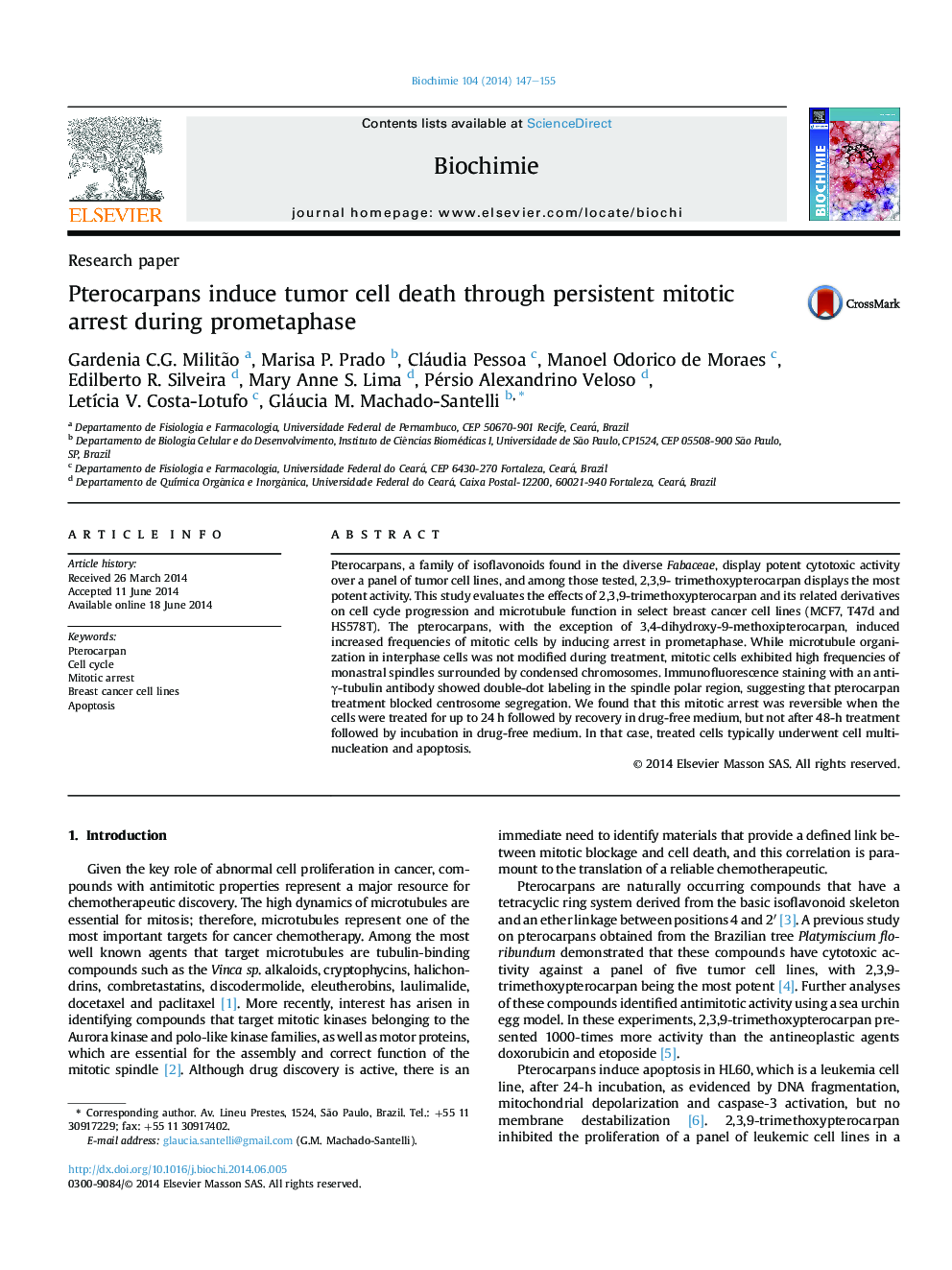| Article ID | Journal | Published Year | Pages | File Type |
|---|---|---|---|---|
| 1952123 | Biochimie | 2014 | 9 Pages |
•Pterocarpans inhibit of spindle pole separation, leading to cell cycle arrest at prometaphase.•Long mitotic arrest was typically followed by subsequent entry into apoptosis.•Pterocarpan is suggested as a potential new anticancer molecule.
Pterocarpans, a family of isoflavonoids found in the diverse Fabaceae, display potent cytotoxic activity over a panel of tumor cell lines, and among those tested, 2,3,9- trimethoxypterocarpan displays the most potent activity. This study evaluates the effects of 2,3,9-trimethoxypterocarpan and its related derivatives on cell cycle progression and microtubule function in select breast cancer cell lines (MCF7, T47d and HS578T). The pterocarpans, with the exception of 3,4-dihydroxy-9-methoxipterocarpan, induced increased frequencies of mitotic cells by inducing arrest in prometaphase. While microtubule organization in interphase cells was not modified during treatment, mitotic cells exhibited high frequencies of monastral spindles surrounded by condensed chromosomes. Immunofluorescence staining with an anti-γ-tubulin antibody showed double-dot labeling in the spindle polar region, suggesting that pterocarpan treatment blocked centrosome segregation. We found that this mitotic arrest was reversible when the cells were treated for up to 24 h followed by recovery in drug-free medium, but not after 48-h treatment followed by incubation in drug-free medium. In that case, treated cells typically underwent cell multinucleation and apoptosis.
